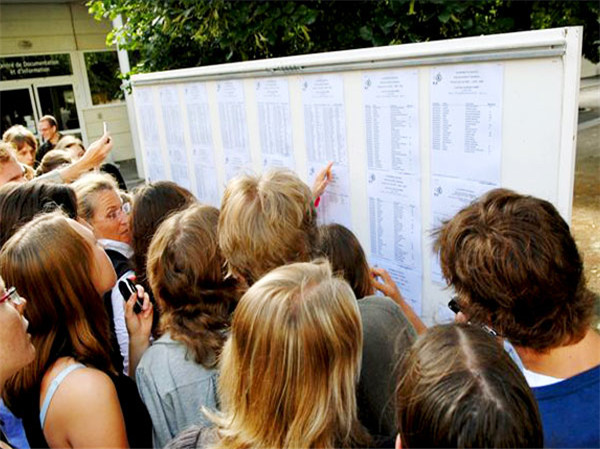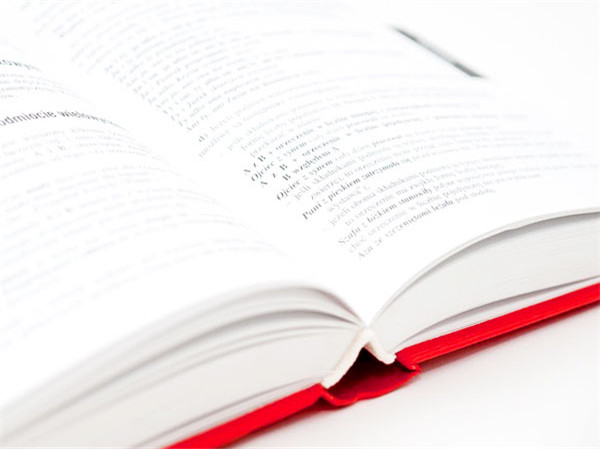
官方真题Official6托福阅读Passage1题目
Question 1 of 13
Which of the sentences below best expresses the essential information in the highlighted sentence in the passage? Incorrect choices change the meaning in important ways or leave out essential information.
A. Running water was the best power source for factories since it could keep machines operating continuously, but since it was abundant only in Lancashire and Scotland, most mills and factories that were located elsewhere could not be water driven.
B. The disadvantage of using waterpower is that streams do not necessarily flow in places that are the most suitable for factories, which explains why so many water-powered grain and textile mills were located in undesirable places.
C. Since machines could be operated continuously only where running water was abundant, grain and textile mills, as well as other factories, tended to be located only in Lancashire and Scotland.
D. Running water was the only source of power that was suitable for the continuous operation of machines, but to make use of it, factories had to be located where the water was, regardless of whether such locations made sense otherwise.
Question 2 of 13
Which of the following best describes the relation of paragraph 2 to paragraph 1?
A. Paragraph 2 shows how the problem discussed in paragraph 1 arose.
B. Paragraph 2 explains how the problem presented in paragraph 1 came to be solved.
C. Paragraph 2 provides a more technical discussion of the problem introduced in paragraph 1.
D. Paragraph 2 shows why the problem discussed in paragraph 1 was especially important to solve.
Question 3 of 13
The word “exploited ” in the passage is closest in meaning to
A. utilized
B. recognized
C. examined
D. fully understood
Question 4 of 13
The word “vastly ” in the passage is closet in meaning to
A. quickly
B. ultimately
C. greatly
D. initially
Question 5 of 13
According to paragraph 2, the “atmospheric engine ” was slow because
A. it had been designed to be used in coal mines
B. the cylinder had to cool between each stroke
C. it made use of expanding steam to raise the piston in its cylinder
D. it could be operated only when a large supply of fuel was available
Question 6 of 13
According to paragraph 2, Watt's steam engine differed from earlier steam engines in each of the following ways EXCEPT:
A. It used steam to move a piston in a cylinder.
B. It worked with greater speed.
C. It was more efficient in its use of fuel.
D. It could be used in many different ways.
Question 7 of 13
In paragraph 3, the author mentions William Murdoch’s invention of a new form of nighttime illumination in order to
A. indicate one of the important developments made possible by the introduction of Watt's steam engine
B. make the point that Watt's steam engine was not the only invention of importance to the Industrial Revolution
C. illustrate how important coal was as a raw material for the Industrial Revolution
D. provide an example of another eighteenth-century invention that used steam as a power source
Question 8 of 13
The phrase “grew accustomed to ” in the passage is closest in meaning to
A. began to prefer
B. wanted to have
C. became used to
D. insisted on
Question 9 of 13
The word “retained ” in the passage is closest in meaning to
A. gained
B. established
C. profited from
D. maintained
Question 10 of 13
According to paragraph 4, which of the following statements about steam engines is true?
A. They were used for the production of paper but not for printing.
B. By 1800, significant numbers of them were produced outside of Britain.
C. They were used in factories before they were used to power trains.
D. They were used in the construction of canals and turnpikes.
Question 11 of 13
According to paragraph 4, providing a machine to take the place of the horse involved combining which two previously separate ingredients?A. Turnpikes and canalsB. Stationary steam engines and wagons with flanged wheelsC. Metal rails in roadbeds and wagons capable of carrying heavy loadsD. Canal boats and heavily laden wagons
Question 12 of 13
Look at the four squares [■] that indicate where the following sentence could be added to the passage.Where would the sentence best fit?
The factories did not have to go to the streams when power could come to the factories..
Question 13 of 13
Directions: An introductory sentence for a brief summary of the passage is provided below. Complete the summary by selecting the THREE answer choices that express the most important ideas in the passage. Some sentences do not belong in the summary because they express ideas that are not presented in the passage or are minor ideas in the passage. This question is worth 2 points.The Industrial Revolution would not have been possible without a new source of power that was efficient, movable, and continuously available.
A.In the early eighteenth century, Savery and Newcomen discovered that expanding steam could be used to raise a piston in a cylinder.
B.Watt's steam engine played a leading role in greatly increasing industrial production of all kinds.
C.Until the 1830s, Britain was the world’s major producer of steam engines.
D.In the mid-1700s James Watt transformed an inefficient steam pump into a fast, flexible, fuel-efficient engine.
E.In the 1790s William Murdoch developed a new way of lighting houses and streets using coal gas.
F.The availability of steam engines was a major factor in the development of railroads, which solved a major transportation problem.
查看官方真题Official6托福阅读Passage1的答案解析请进入下一页→→→
相关推荐
-
【官方真题Official托福阅读】官方真题Official3托福阅读词汇真题练习——pales&significance
2015-11-19![【官方真题Official托福阅读】官方真题Official3托福阅读词汇真题练习——pales&significance]()
-
【托福听力备考】官方真题Official听力高频词汇——文学讲座学科词汇汇总
2015-11-06![【托福听力备考】官方真题Official听力高频词汇——文学讲座学科词汇汇总]()
-
托福到底能考多少分?19年必练真题告诉你答案
APP专享![托福到底能考多少分?19年必练真题告诉你答案]()
-
【官方真题Official托福阅读】官方真题Official3托福阅读词汇真题练习——ensuing&initial
2015-11-19![【官方真题Official托福阅读】官方真题Official3托福阅读词汇真题练习——ensuing&initial]()
-
【官方真题Official托福阅读】官方真题Official3托福阅读词汇真题练习——arduous&difficult
2015-11-19![【官方真题Official托福阅读】官方真题Official3托福阅读词汇真题练习——arduous&difficult]()
-
【官方真题Official托福阅读】官方真题Official3托福阅读词汇真题练习——guarantee&ensure
2015-11-19![【官方真题Official托福阅读】官方真题Official3托福阅读词汇真题练习——guarantee&ensure]()
-
【官方真题Official托福模考】官方真题Official4托福阅读词汇真题练习 adjacent&nearby
2015-12-04![【官方真题Official托福模考】官方真题Official4托福阅读词汇真题练习 adjacent&nearby]()
-
官方真题Official4托福阅读词汇真题练习——rebound&decline
2015-12-04![官方真题Official4托福阅读词汇真题练习——rebound&decline]()
-
官方真题Official5托福阅读词汇真题练习——promote&complicate
2015-12-09![官方真题Official5托福阅读词汇真题练习——promote&complicate]()
-
【托福阅读备考】官方真题Official1托福阅读词汇真题练习——plugged&washed
2015-11-09![【托福阅读备考】官方真题Official1托福阅读词汇真题练习——plugged&washed]()
-
【官方真题Official托福阅读】官方真题Official3托福阅读词汇真题练习——devised&suggested
2015-11-19![【官方真题Official托福阅读】官方真题Official3托福阅读词汇真题练习——devised&suggested]()
-
【官方真题Official托福阅读】官方真题Official3托福阅读词汇真题练习——particular&final
2015-11-19![【官方真题Official托福阅读】官方真题Official3托福阅读词汇真题练习——particular&final]()
-
【官方真题Official托福阅读】官方真题Official3托福阅读词汇真题练习——integral&variable
2015-11-19![【官方真题Official托福阅读】官方真题Official3托福阅读词汇真题练习——integral&variable]()
-
【托福阅读备考】官方真题Official1托福阅读词汇真题练习——autonomous&artistic
2015-11-09![【托福阅读备考】官方真题Official1托福阅读词汇真题练习——autonomous&artistic]()
-
【小站推荐】官方原题Official模考软件之考托模考测试题C1
2014-05-04![【小站推荐】官方原题Official模考软件之考托模考测试题C1]()
-
官方真题Official8托福阅读词汇真题练习——disruption&exhaustion
2015-12-18![官方真题Official8托福阅读词汇真题练习——disruption&exhaustion]()
-
官方真题Official5托福阅读词汇真题练习——overwhelm&powerful
2015-12-09![官方真题Official5托福阅读词汇真题练习——overwhelm&powerful]()
-
【托福听力备考】官方真题Official听力高频词汇——歌剧讲座学科词汇汇总
2015-11-06![【托福听力备考】官方真题Official听力高频词汇——歌剧讲座学科词汇汇总]()
-
官方真题Official5托福阅读词汇真题练习——afford&offer
2015-12-09![官方真题Official5托福阅读词汇真题练习——afford&offer]()
-
托福写作批改:[综合+独立][官方真题Official19]高分作文推荐
2015-10-23![托福写作批改:[综合+独立][官方真题Official19]高分作文推荐]()
-
【托福阅读备考】官方真题Official1托福阅读词汇真题练习——out of sight
2015-11-09![【托福阅读备考】官方真题Official1托福阅读词汇真题练习——out of sight]()
定制专属课程规划
领取成功
添加助教,定制你的专属课程规划

每日提分任务
专业提分资料
全程督学答疑






















![托福写作批改:[综合+独立][官方真题Official19]高分作文推荐](http://www-static.zhan.com/uploadfile/images/auth/crop/13733499.jpg)

